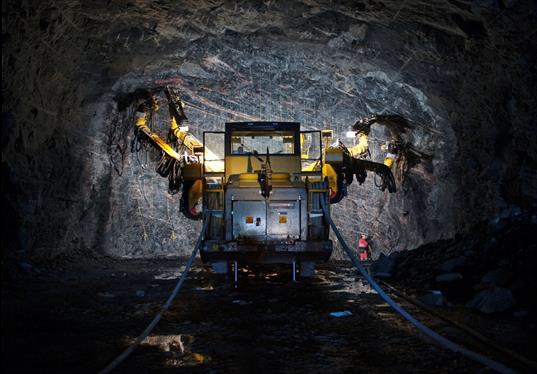Epiroc’s second ever Capital Markets Day, in Stockholm, Sweden, was an enlightening affair, with the original equipment manufacturer backing up its credentials as a leader in the mine automation, digitalisation and electrification space.
Speakers including Per Lindberg, President and CEO; Helena Hedblom, Senior Executive Vice President Mining and Infrastructure; Sami Niiranen, President Underground Rock Excavation; and Jose Sanchez, President Drilling Solutions, with all of them reeling off a number of statistics worth highlighting.
For example, the company said around 60% of Epiroc equipment is now being delivered with its rig control system (RCS), a system that on Pit Viper blasthole drills is the next “evolutionary step toward fully autonomous mining”, the company recently said.
At the same time as this, 3,400 of its machines have been delivered with “connectivity”, Lindberg said, a transition that is allowing customers to monitor, in real time, elements of a machine’s performance. As recently as the company’s June quarter results release, Lindberg said more than 2,500 machines were ‘connected’.
When it came to automation underground, Epiroc said it had 43 projects on its books, with 600 drill rigs equipped for complete automation of the drilling process; the latter up from the more than 550 Lindberg quoted in the June quarter results.
Epiroc has also seen a 30% increase in utilisation of connected Simba production drills globally, according to Lindberg.
On surface, meanwhile, Epiroc was involved with autonomous and teleremote drilling in 16 countries on five continents, he said.
Among these automation projects were the fully autonomous electric drill at Boliden’s Aitik copper mine, in Sweden, an autonomous SmartROC D65 at Newmont Goldcorp’s Hollinger mine, in Canada, and autonomous Pit Vipers at the leading gold miner’s Penasquito mine, in Mexico.
A map shown by Sanchez also included first remote/teleremote operations in Morocco, Ukraine (see Ferrexpo Yeristovo story), Chile and Papua New Guinea. There was also mention of first autonomous solutions in South Africa (along with a first multipass autonomous operation) and a first autonomous drill in operation in Australia.
And, of course, the company provided an update on its battery-electric solutions, which Epiroc believes will improve health and safety, reduce emissions, lower total cost of operation and improve productivity for its customers.
Lindberg said the company had accumulated 100,000 hours of battery-electric machinery operation to date and, so far, customers had achieved a more than 70% reduction in energy consumption – mainly through reduced ventilation needs.
On the company’s recently-launched Minetruck MT42 Battery, specifically, Niiranen said Epiroc had observed 10% increased productivity through faster ramp cycle time at operations where the machine was being trialled/operating. One of these machines is currently being trialled at Agnico Eagle’s Kittilä gold mine, in Finland, as part of the EU-funded Sustainable Intelligent Mining Systems project (a project Epiroc is coordinator of).











